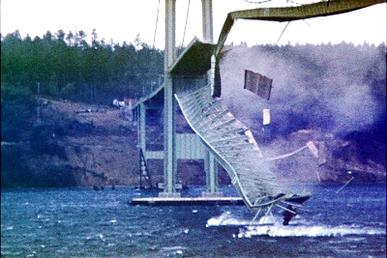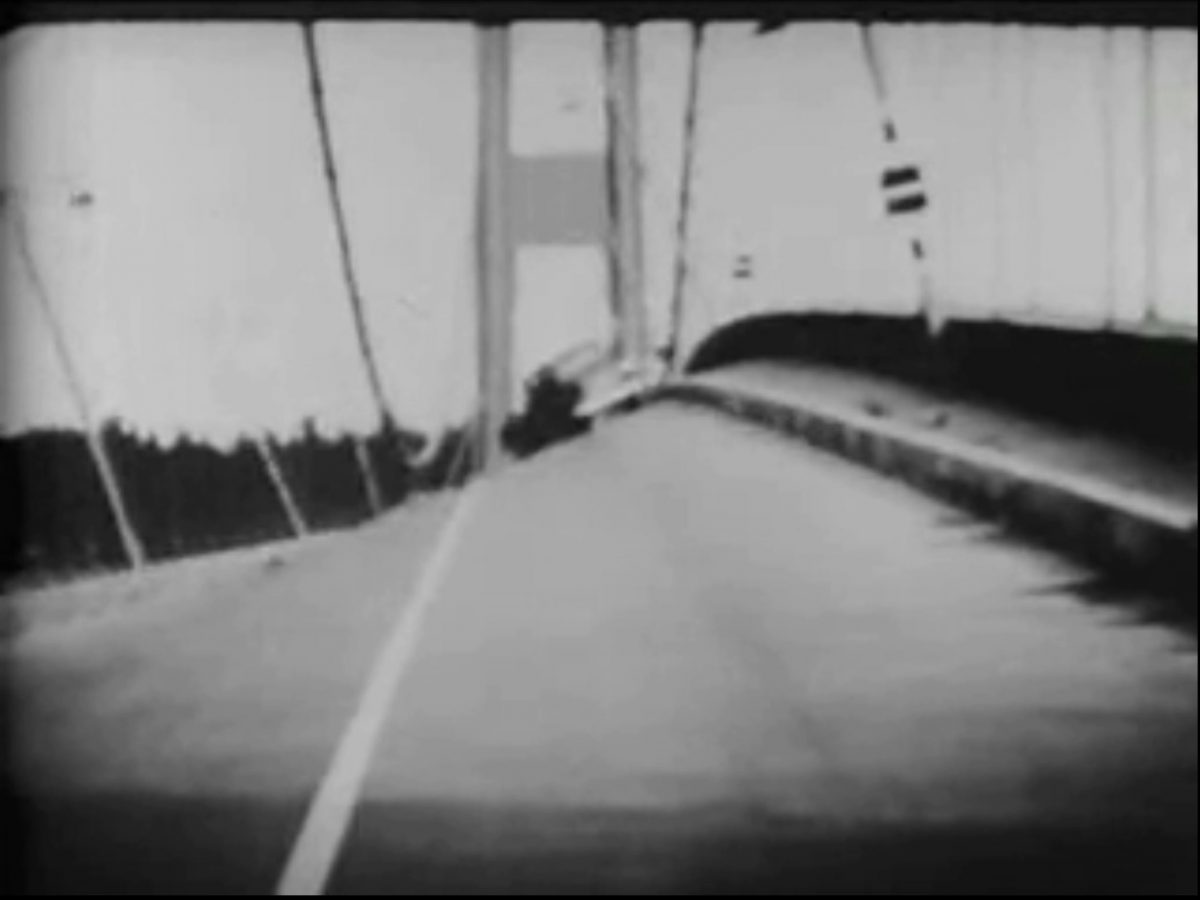This week marks the anniversary of the famous collapse of the Tacoma Narrows Bridge on Nov 7, 1940 – just 4 months after it was opened (at the time it was the third-longest suspension bridge in the world – based on main span length).
As engineers, we’ve all seen this video from our engineering degrees and for many it remains a vivid reminder of the devastating potential of forced harmonic resonance on a light structure – noting particularly that this bridge collapse occurred during relatively normal speed winds (of just 68 km/hr) which unexpectedly produced aeroelastic flutter that matched the bridge’s natural frequency. This resonance in turn led to movement and deformation of the bridges girder and supporting structures such that the cables eventually exceeded their allowable stress & failed.
Let’s reflect on what engineers have learned from this famous disaster.
Fortunately, this high-profile bridge collapse helped to boost research into the aerodynamics and aeroelastic behaviour of suspension bridges and other light structures – knowledge which has helped influenced the design of all modern long-span bridges now being built.
We now know we need to carefully consider resonance from vortex shedding and aeroelastic flutter in all light structures, especially suspension bridges.
In the immediate aftermath of the Tacoma Narrows bridge collapse, extensive and costly wind tunnel testing of a 200:1 scale model was conducted to explicitly understand the cause of failure and confirm that the bridge was indeed aerodynamically unstable under these failure conditions. The findings of this work led to a much deeper understanding of wind-induced oscillations for common shapes used in bridge structures – in this case, flow separation occurring around the vertical girders of the closed H-shape led to a oscillating vortex pattern (intermittently above and below the main roadway structure) – oscillating with a frequency that matched the natural frequency of the overall bridge structure.

Redesign of this and similar bridges following the Tacoma Narrows disaster have incorporated additional stiffening struts and more open triangular trusses to allow the wind to flow freely through openings. Impetus was also provided to help research engineers to develop better dynamic and modal analysis models and other civil structures – which are now primarily conducted with the support of simulation-based tools for the design of modern bridges.
As engineers, we are now fortunate that ANSYS offers us the ability to simulate fluid-structure interaction (FSI) to consider the potential for structural/aerodynamic resonances in any new structures we are designing.
Are you innovating? Creating a unique or new product? Based on these hard-learned lessons, we’d strongly encourage you to avoid the same mistakes and use Simulation Upfront in your design process to avoid such unforeseen challenges and unexpected failures!
Contact LEAP today to work with a local simulation expert & understand how you can get started.
Footnote: the portion of the bridge that fell into the water now serves as an artificial reef!
ANSYS FSI footage used under creative commons licence:
Author: Itravell License: Attribution-ShareAlike 4.0 International (CC BY-SA 4.0) https://creativecommons.org/licenses/by-sa/4.0/deed.en
https://creativecommons.org/licenses/… Link: https://commons.wikimedia.org/wiki/Fi… Full scale, 2-way Fluid Structure Interaction (FSI) model of a suspension bridge exhibiting aeroelastic flutter. Created in ANSYS R16.
Original bridge footage used under creative commons licence: 1940 Tacoma Narrows Bridge destruction



